The rich historical and social symbolism of art made from hair
One way to cultivate creativity is to make art from the mundane. There is tremendous freedom in experimenting with a range of common everyday objects without any preconceived notions. Simply handle the media and reflect on, and then play up, its inherent characteristics. One of the better classes I took in art school was called “A Material a Week.” Each week a new medium was presented to the class. The common items found in abundance included large sheets of cardboard, hair, toothpicks, tar paper, aluminum foil, Styrofoam cups, tongue depressors, rope, beads, spaghetti, etc. After a week of exploring a material’s expressive potential, the class reconvened to share and critique the resulting work. The range of responses was amazing as students not only drew on the inherent characteristics of a medium, but also tapped into historical, social, and personal connections. The critiques were supported with slide shows of work that either used the same materials or drew on the same qualities within the materials.
With this experience in mind, I offer A Medium a Month. In these posts I will show how artists have flexed their creativity and imaginations through the manipulation of a single common object or medium.
Let us begin with hair. Yes, I am follically challenged, but that is not why I picked hair to start with. As these artists show, hair has tremendous historical and social symbolism. I guarantee that you will not look at hair the same way again. (One link will make you look at a bar of soap differently as well.)
- Tom Friedman’s beautiful, funny, and icky hair spiral or his hair tarantula
- Keith Bentley’s horse hair Cauda Equina series or his hair works
- Sonya Clark’s insightful and provocative hair art or even her Comb series
- Ana Mendieta’s facial hair transplants
- Nagi Noda’s Hair Hats
- Oreet Ashery’s performance piece Hairoism
- Augustina Woodgate’s Brush series and her I Wanted To Be a Princess series
- Diane Jacobs’ Hair Talk or other hair sculptures
- Loren Schwerd’s hair memorials to the victims of Hurrican Katrina
- Melanie Bilenker’s hair-embedded jewelry
- Don Relyea’s Hair Particle Drawing Project (Does digital hair that grows electronically count?)
 “It’s usually disgusting when your pubic hair gets stuck to the soap,” says artist Tom Friedman, but once after bathing he “found it beautiful–the curves on the white background of the soap.”
“It’s usually disgusting when your pubic hair gets stuck to the soap,” says artist Tom Friedman, but once after bathing he “found it beautiful–the curves on the white background of the soap.”
Initially I was drawn towards materials that had to do with personal hygiene. Cleaning materials. There are all sorts of incidents that sort of redirect me or clue me in to things: things that just happen and become significant to me rather than having a very logical reason for them. I came to using cleaning materials hen I was in graduate school. I was working in this space that was shared by another student, and I wanted to do a piece with blue Kool-Aid. And, I don’t know, maybe I had some water reference or whatever. She grew up in Manhattan and was just keenly aware of the fact that sugar can draw cockroaches, especially when it’s sprinkled on the floor.…I needed something blue and powdery but that’s not blue sand, so she suggested blue laundry detergent. And so I found this detergent called Fresh Start, which seemed to make a lot of sense, which is what I used. I was looking at these cleaning materials and I was interested in how the materials related. I drew a connection between mundane rituals for keeping ourselves clean, and rituals for spiritual purification. Mostly the materials, I think, had a quality of home. I don’t see them so much as related to be “domestic,” but more as relating to the everyday. But not even so much that—something that’s familiar. I think about them as a material that’s more familiar.
— Tom Friedman in a PBS interview

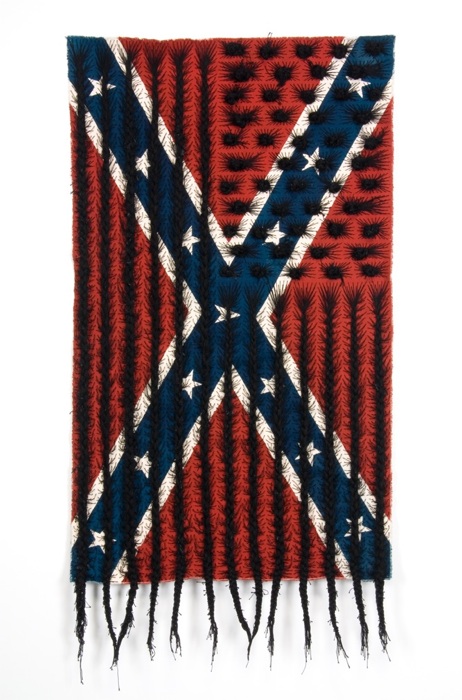

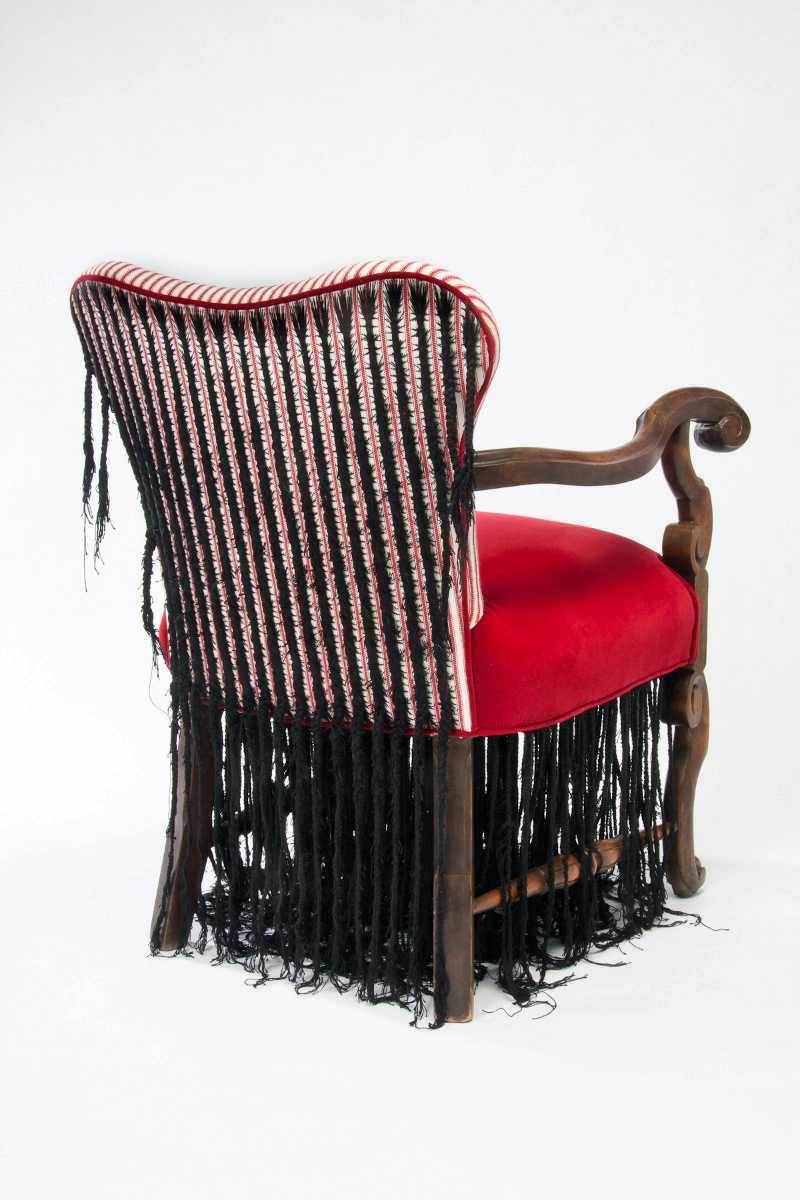
Short, cropped, and natural. That was my hairstyle for many years. When I started allowing it to grow, hair which had long been a subject in my work also became my medium. Hair is power. Note the Samson myth, Rastafarian dreadlocks, and Angela Davis’s Afro of the 1960s. It grows approximately 5 inches a year and measures our lives like Lachesis of the Three Fates in Greek mythology. As carrier of DNA, hair holds the essence of identity. Deep within each strand, the vestiges of our roots resound. In this work hair is formed into markers of chronology, wisdom, and adornment.
— Sonya Clark, from her website

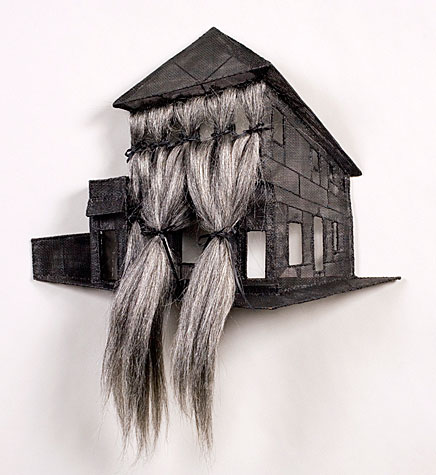
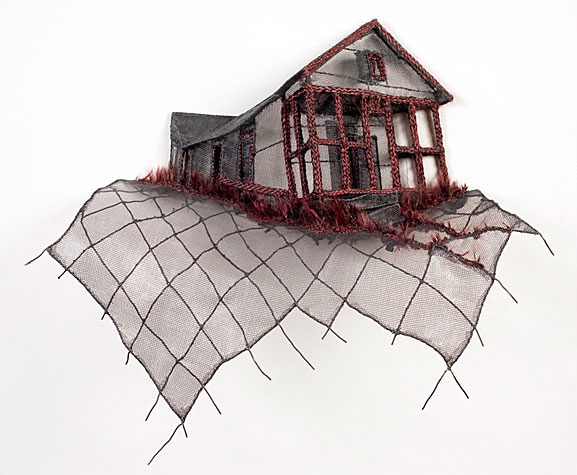
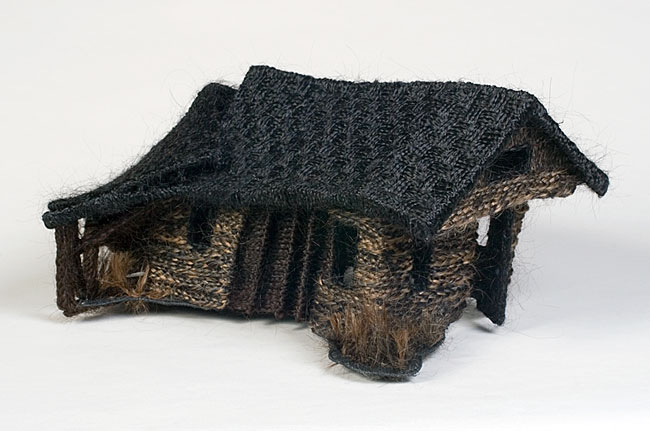
Mourning Portrait, is a series of memorials to the communities of New Orleans that were devastated by the federal levee breeches which accompanied Hurricane Katrina. These commemorative objects are made from human hair extensions of the type commonly used by African-American women that I found on the curb beside the flooded St. Claude Beauty Supply Shop. The portraits draw on the nineteenth-century tradition of hairwork, in which family members or artisans would fashion the hair of the deceased into intricate jewelry and other objects as symbols of death and rebirth and remembrance.
— Loren Schwerd from her website
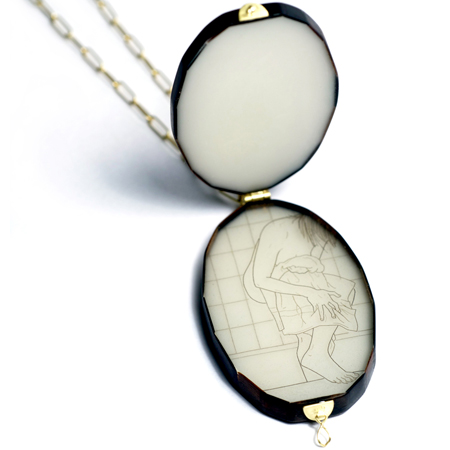

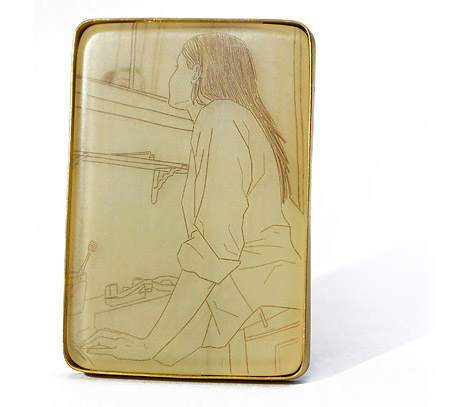
The Victorians kept lockets of hair and miniature portraits painted with ground hair and pigment to secure the memory of a lost love. In much the same way, I secure my memories through photographic images rendered in lines of my own hair, the physical remnants. I do not reproduce events, but quiet minutes, the mundane, the domestic, the ordinary moments.
— Melanie Bilenker from her website
Share your links to other hair-related art and I will add them to the list. Or, add to the discussion by sharing images of your students’ hair explorations.
NOTE: As the teacher, you will need to consider the benefits of when you share works by established artists. When shown early in the process they can get the creative juices flowing, but they can also lead to self-censoring. Remember, the goal is not to create portfolio-worthy pieces, though that may happen. The goal is to practice thinking expansively and to become more artistically fluent, agile, and responsive.
Please share if you know others who create art made from hair.

I like the work of jeweler Melanie Bilenker (http://www.melaniebilenker.com/), who creates delicate images from her own hair and encases them in resin.
Thanks, that is a nice addition to the list. I love the way her art makes the mundane (medium and subject) so precious.